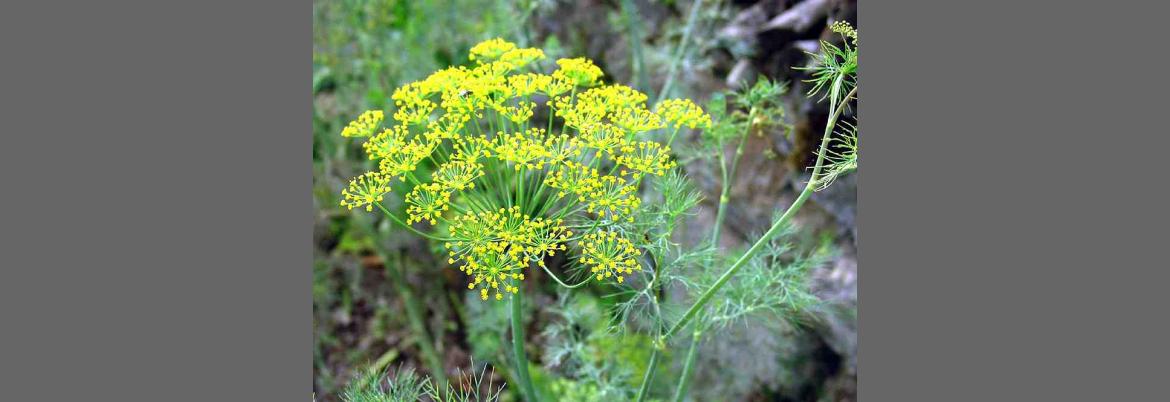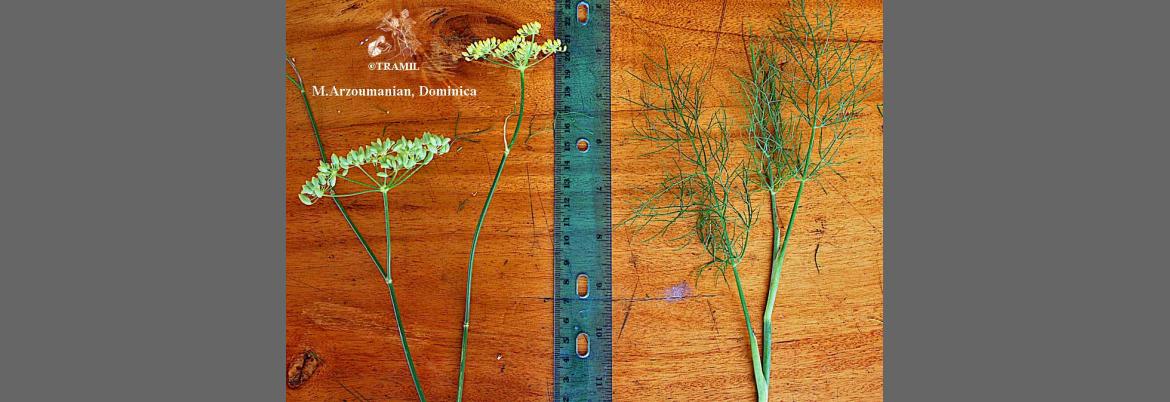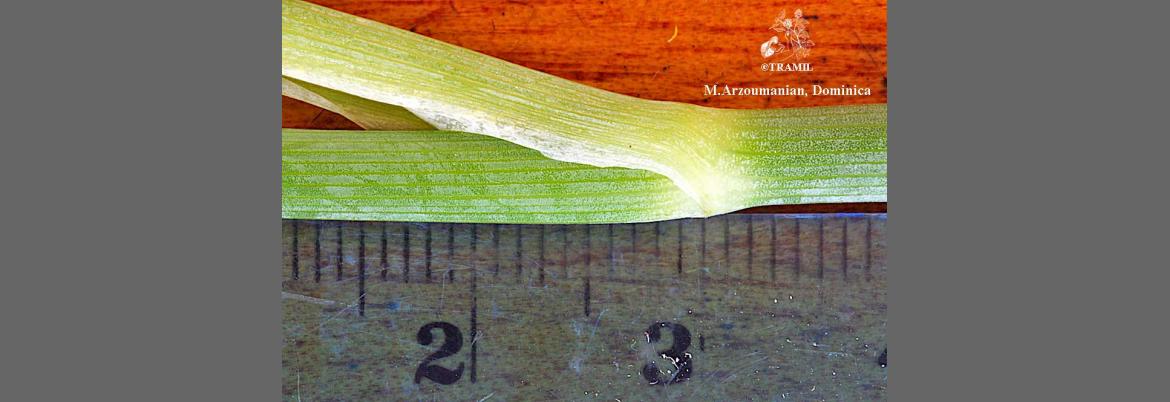1 GERMOSÉN-ROBINEAU L, GERÓNIMO M, AMPARO C, 1984
Encuesta TRAMIL. enda-caribe, Santo Domingo, Rep. Dominicana.
2 HARBONE J, WILLIAMS C, 1972
Flavonoid pattern in the fruits of the Umbelliferae. Phytochemistry 11:1741-1750.
3 DANIEL M, 1989
Polyphenols of some Indian vegetables. Curr Sci 58(23):1332-1334.
4 VARNAITE R, 1988
Rutin content in capsicum, capsella, urtica, primula, lepidium, lactuca, brassica, anethum, beta, petroselinum, Allium genera representatives. Liet Tsr Mokslu Akad Darb Ser C 4:29-32.
5 DRANIK LI, PROKOPENKO AP, 1969
Coumarins and acids from Anethum graveolens fruit. Khim Prir Soedin 55:437.
6 APLIN RT, PAGE CB, 1967
Constituents of native Umbelliferae. I. Coumarins from dill (Anethum graveolens). J Chem Soc C 23:2593-2596.
7 PUNDARIKAKSHUDU K, BHAVSAR G, 1991
Effect of ascorbic acid on the yield & quality of essential oils in Indian dark variyali sowa (Anethum sowa). Int J Pharmacog 29(1):57-61.
8 PINKAS M, BEZANGER-BEAUQUESNE L, 1986
Les plantes dans la thérapeutique moderne. 2è éd. Paris, France: Ed. Maloine.
9 DUKE JA, ATCHLEY AA, 1986
Handbook of proximate analysis tables of higher plants. Boca Raton, USA: CRC Press. p17.
1O IKRAM M, HAQ I, 1980
Screening of medicinal plants for antimicrobial activity. Fitoterapia 51:281-284.
11 KIUCHI F, NAKAMURA N, MIYASHITA N, NISHIZAWA S, TSUDA Y, KONDO K, 1989
Nematocidal activity of some antihelmintic traditional medicines, and species by a new assay method using larvae of Toxocara canis. Shoyakugaku Zasshi 43(4):279-287.
12 DHAR ML, DHAR MM, DHAWAN BN, MEHROTRA BN, RAY C, 1968
Screening of Indian plants for biological activity. Part I. Indian J Exp Biol 6:232-247.
13 LOREA PAGANINI F, SILVEIRA SN, AMARANTE SILVA F, VENSKE DE ALMEIRA TR, SINNOTT SILVA E, 1992
Triagem farmacologica de chas comercializados - estudo do mecanismo de açao. Laboratorio de farmacologia, Rio Grande - Apresentado no VII Reunião Anual da Federação de Sociedades de Biologia Experimental, Caxambú, Brazil.
14 FEIZ J, MOATTAR F, 1985
Formulation, preparation and evaluation of medicinal plants on quantity and quality of human milk (conference). Chapel Hill, USA: Internat. Res. Cong. Nat. Prod., Coll. Pharm. Univ. Carolina.
15 CHANG I, WOO W, 1980
Screening of Korean medicinal plants for antitumor activity. Arch Pharm Res 3(2):75-78.
16 PDR Herbal, 2000
Anethum graveolens. Physician Desk Reference (PDR) for Herbal Medicines, Montvale, USA: Medical Economics Company. p252.
17 CANIGUERAL S, VILA R, RISCO E, PEREZ F, PORTILLO A, FREIXA B, MILO B, VANACLOCHA B, RIOS JL, MORALES MA, ALONSO JR, BACHILLER LI, PERIS JB, STUBING G, 2002
Anethum graveolens. Vademecum de Fitoterapia, Editorial Masson, Barcelona, España, Jul.20,2002. URL: http://www.masson.es/book/fitoterapia.html
18 HARRIES N, JAMES KC, PUGH WK, 1978
Antifoaming and carminative actions of volatile oils. J Clin Pharmacol 2:171-177.
19 SHIPOCHLIEV T, 1968
Pharmacological investigations into several essential oils, first communication. Effect on the smooth musculature. Vet Med Nauki 56:63.
20 DUKE JA, 1992
Handbook of biologicaly active phytochemicals and their activities. Boca Raton, USA: CRC Press.
21 NATAQUE K, KANZAWA K, MIZUNO M, UENO N, KOBAYASHI T, DANNE GI, MINAMOTO S, 1989
Herb water-extracts markedly suppress the mutagenicity of TRP-P-2. Agr Biol Chem 53(5):1423-1425.
22 SETHI N, NATH D, SINGH RK, 1989
Teratological evaluation of some commonly used indigenous antifertility plants in rats. Int J Crude Drugs Res 27(2):118-120.
23 FUKUOKA M, YOSHIHIRA K, NATORI S, SAKAMOTO K, IWAHARA S, HOSAKA S, IRONO I, 1980
Characterization of mutagenic principle and carcinogenicity test of dill weed and seeds. J Pharmacobio Dyn 3(5):236-244.
24 ALBORNOZ A, 1993
Medicina tradicional herbaria. Guía de Fitoterapia. Caracas, Venezuela: Editorial Instituto Farmacoterápico Latino S.A. p87,122.
25 MARTINEZ MJ, BETANCOURT J, LOPEZ M, MOREJON Z, BARCELO H, LAINEZ A, MONTES ME, REGO R, BOUCOURT E, MORON F, 2000
Toxicidad aguda clásica y clases tóxicas agudas de semilla seca deAnethum graveolens. Informe TRAMIL. Laboratorio Central de Farmacología, Facultad de Ciencias Médicas “Dr. Salvador Allende”, La Habana, Cuba.
26 LONGUEFOSSE JL, NOSSIN E, 1990-95
Enquête TRAMIL. Association pour la valorisation des plantes médicinales de la Caraïbe AVPMC, Fort de France, Martinique.






















